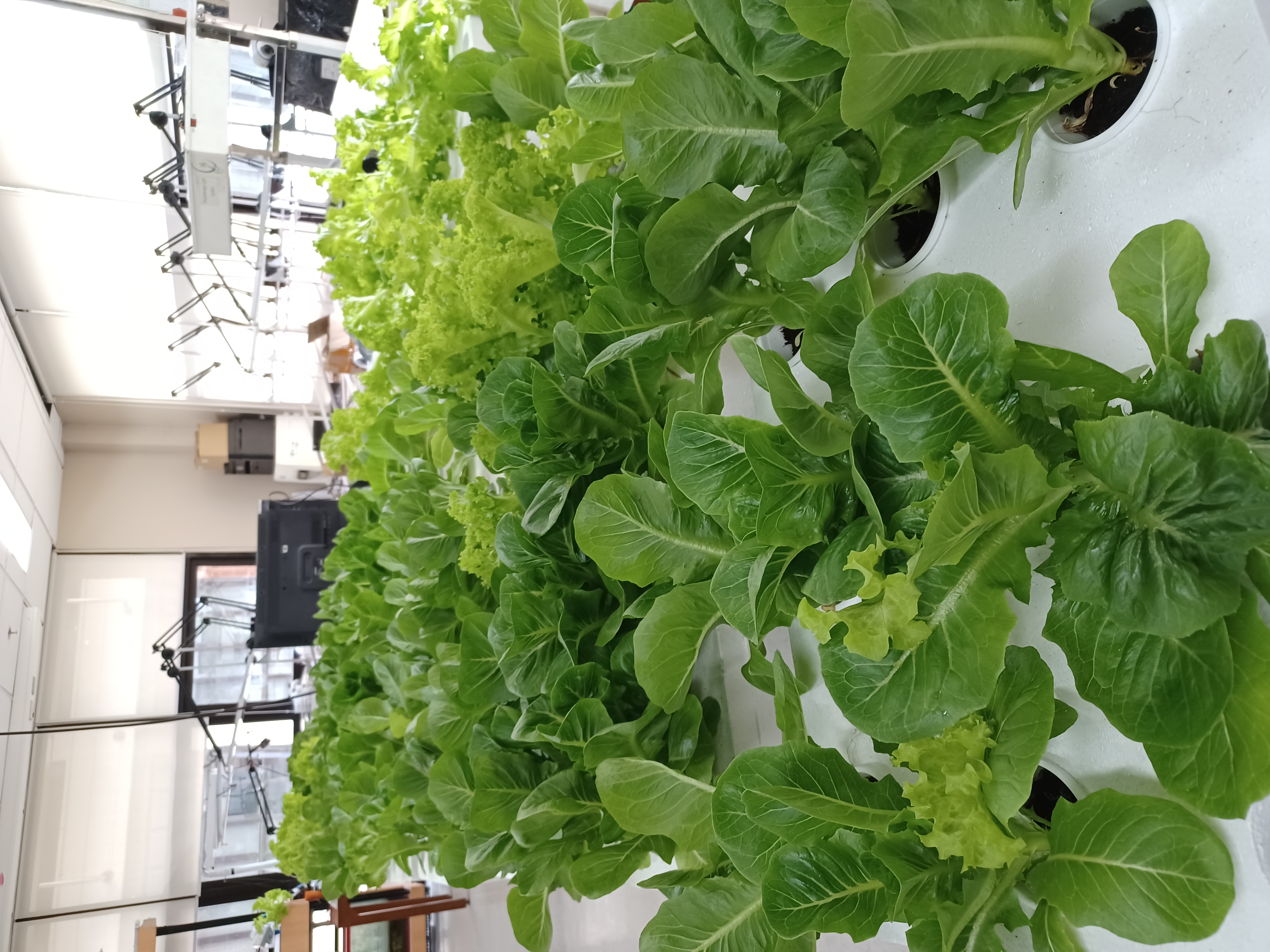
6 minute read
Growing Veggies & Communities: AIC’s Hydroponics Project
The urban jungle can make finding fresh, healthy, and affordable food options difficult. Fortunately in the Ateneo, every once in a while an email is sent out bearing the subject “SOSE lettuce for sale!!!” On these days, one can find flocks of Ateneans carrying bags of their freshly purchased produce, still planted in small white cups.
A tucked away rooftop on campus houses rows and rows of these lush leafy greens. But they are not planted in soil. Their roots are suspended in what seems like water. These beds are found in a greenhouse, literally green with its green wall netting, that is run by the Ateneo Innovation Center (AIC). And their hydroponics project is their sustainable solution to food security for the immediate community and beyond.
Necessity is the mother of invention
Hydroponics is a soil-less farming technique that instead uses a nutrient-rich solution. Unlike traditional farming, it does not require vast lands or heavy equipment. When combined with monitoring sensors, it becomes smart hydroponics which enables precision agriculture. And with greenhouses or other similar structures, it becomes an enhanced method for protected agriculture. Precision and protection are important when optimizing for higher yields, particularly for high-value crops.
Paul Cabacungan, AIC operations manager, shares that the project was developed as a response to the scarcity in food supply during the pandemic. They built on their previous work where they explored how indoor light affected the growth of plants.
Due to restrictions, their pilot set-up was at the home of Reymond Cao, one of AIC’s long-time research assistants. At first, Cao was able to only feed his family homegrown vegetables. Eventually, they were able to share with the neighbors as well. Their small scale farm showed one could earn Php 400-500 with just 1 sqm of space. With this initial success, the team requested to scale up on campus. They received financial support from the Office of the Dean of the School of Science and Engineering and were given their rooftop space. In December 2023, they started selling produce to the Ateneo community. Each harvest yields about 400 lettuce heads which translates to earning around Php 7,000.00-8,000.00.

Teach a man to farm, and you feed him for a lifetime
The agricultural sector of the Philippines faces many challenges that are exacerbated by the typhoons and droughts intensified by climate change. Cabacungan explained that the rice farming cycle only yields 1 or 2 harvests per year. The changing weather conditions and the rise in pesticide and fertilizer prices make it even more difficult. This makes farmers describe their livelihood as a gamble. AIC envisions helping these farmers to convert to hydroponics where they can earn so much more. “Ang farmers naming kamag-anak kumikita sila ng 50k a year. It’s a very sad story. And that’s why we are into this. It’s not for us. It’s for our kababayan.” (“Our relatives who are farmers only earn Php 50,000 a year. It’s a very sad story. And that’s why we are into this. It’s not for us. It’s for our fellow Filipinos.”)
Deploying the technology to farming communities has its own challenges. Cabacungan shared that traditional farmers can be reluctant, saying, “‘Alam mo narinig namin yan. Hindi namin alam yan eh, bat kami magsusugal jan?” (“You know we have heard about that. But why would we gamble with something we are not familiar with?’”) But the AIC team is unwavering in their advocacy and they take their time to introduce hydroponics to these communities. “Merong tinatawag na local heroes. If you do not train the local heroes on the ground it will not take off,” said Cabacungan. (“There are local heroes. And if you do not train those on the ground, it will not take off.”)
The team first began sharing the knowledge on campus. They have developed a manual which is freely available and have also conducted a number of hands-on training sessions on campus. With these foundations established, they were ready to take hydroponics from the heights of Loyola to the plains of Pampanga.
AIC has established a new hydroponics facility in Candaba and has recently celebrated their first harvest. They grew eggplants, tomatoes, and some varieties of chilies. As this is a new terrain, they are still working on addressing the various variables for different crops in this environment. But with just a few more optimization experiments, they will soon onboard the local heroes.


Practice, sunshine, and passion make perfect
Multiple trial-and-error is not new to the team. “‘Yung unang attempt talagang magfe-fail ka. Lalo na kung beginner ka, kasi beginner ka eh,” Cao shared his experience and the journey. (“On the first attempts, you will really fail, that’s part of being a beginner.”) So his advice to those who want to try hydroponics is to keep going and to stay persistent.
Cao even shared a funny story from their beginnings. In one of their iterations, they have tried all the variables but it was not yielding results that hit their target. As it turns out, they overlooked a critical essential: sunlight.
Parallel to the off-site farm, the homebase on campus continues to iterate, improve, and expand. It has enabled research on phytoremediation using coconut. Other projects were also able to grow black rice and okra. Now, they are looking into strawberries as the next project.
The AIC hydroponics project is at the crossroads of science, business, education, and advocacy. And at the core of their work is something as essential as sunlight is for plants: grit and passion.

Inspired to start your own hydroponics project Visit bit.ly/AICHydrop
-
Text: Christiane OrianaPhotos: Ateneo Innovation Center








